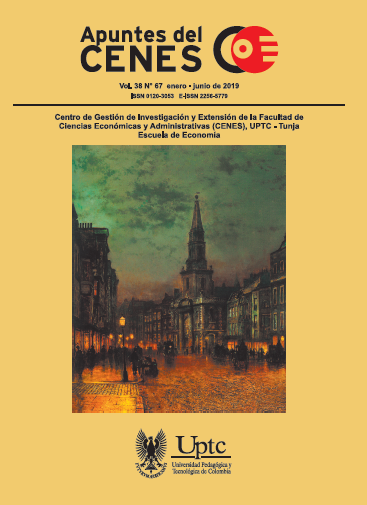El dólar chino vinculado al de Hong Kong durante la crisis global

Resumen
Este documento explora el nivel de precios internos y la competitividad comercial de Hong Kong, además de la compatibilidad de esta caja de conversión basada en el dólar con los criterios inspirados en la teoría de la zona monetaria óptima (ZMO). En cuanto al precio y la competitividad, los hallazgos señalan que durante la agitación Hong Kong no se había desempeñado tan bien como en el pasado y una razón aparente de esto son las entradas de capital proveniente del extranjero, especialmente de los Estados Unidos, que impulsaron el alza de los precios de las propiedades. En conformidad con los criterios de la ZMO, los hallazgos corroboran ampliamente el régimen de cambio fijo con los Estados Unidos como ancla monetaria, pero, al mismo tiempo, China aparece como un posible candidato a contendor de Estados Unidos como ancla monetaria. A más largo plazo, en medio de la prolongada debilidad económica y monetaria en los Estados unidos, más el surgimiento del renminbi como moneda global, Hong Kong podría también unificar su tipo de cambio con el dinero chino.
Palabras clave
China, Hong Kong, Estados Unidos, Asia, Dolár, renminbi, moneda, dinero
Referencias
Artis, M. & Zhang, W. (2002). Membership of EMU: A Fuzzy Clustering Analysis of Alternative Criteria. Journal of Economic Integration, 17(1), 54-79.
https://doi.org/10.11130/jei.2002.17.1.54
Baxter, M. & Stockman, A. (1989). Business Cycles and the Exchange-rate Regime. Journal of Monetary Economics, 27(1), 377-400.
https://doi.org/10.1016/0304-3932(89)90039-1
Bayoumi, T. & Eichengreen, B. (1997). Ever Closer to Heaven? An Optimum-Currency-Area Index for European Countries. European Economic Review, 41, 761-770.
https://doi.org/10.1016/S0014-2921(97)00035-4
Boreiko, D. (2003). EMU and Accession Countries: Fuzzy Cluster Analysis of Membership. International Journal of Finance and Economics, 8, 309-325.
https://doi.org/10.1002/ijfe.216
Chen, N. F. (2001). The Hong Kong Currency Board during the 1997-8 Crisis: Problems and Solutions. International Review of Finance, 2, 99-112.
https://doi.org/10.1111/1468-2443.00017_2_1-2
Devereux, M. B. (2003). A Tale of Two Currencies: The Asian Crisis and the Exchange Rate Regimes of Hong Kong and Singapore. Review of International Economics, 11, 38-54.
https://doi.org/10.1111/1467-9396.00367
Fleming, J. M. (1971). On Exchange Rate Unification. Economic Journal, 81, 467-88.
https://doi.org/10.2307/2229844
Fung, L. & Yu, I. (2010). Dislocations in the FX Swap and Money Markets in Hong Kong SAR during the Global Credit Crisis of 2007-08. BIS Papers 54. Basel, Switzerland: Bank for International Settlement.
https://doi.org/10.2139/ssrn.1525340
Funke, M. & Paetz, M. (2013). Housing Prices and the Business Cycle: An Empirical Application to Hong Kong. Journal of Housing Economics, 22(1), 62-76.
https://doi.org/10.1016/j.jhe.2012.11.001
Gerlach, S. (1988). World Business Cycles under Fixed and Flexible Exchange Rates, Journal of Money, Credit and Banking. 20, 621-632.
https://doi.org/10.2307/1992288
Gerlach-Kristen, P. (2009, June). Business Cycle and Inflation Synchronisation in Mainland. China and Hong Kong. International Review of Economics & Finance, 18(3), 404-418.
https://doi.org/10.1016/j.iref.2008.09.006
Goodstadt, L. F. (2010) The Global Crisis: Why Laisser-Faire Hong Kong Prefers Regulation HKIMR Working Paper No.01/2010. Hong Kong: Hong Kong Institute for Monetary Research
https://doi.org/10.2139/ssrn.1516253
Imai, H. (2010), Hong Kong's Inflation and Deflation under the Us Dollar Peg: The Balassa-Samuelson Effect or Export Price Shocks? The Developing Economies, 48, 319-344.
https://doi.org/10.1111/j.1746-1049.2010.00110.x
Kenen, P. (1969). A Theory of Optimum Currency Areas: An Eclectic View. In R. A. Mundell & A. K. Swoboda, (eds). Monetary Problems of the International Economy (pp. 41-60). Chicago: University of Chicago Press.
Krugman, P. (1990). Policy Problems of a Monetary Union. In P. De Grauwe & L. Papademos, (eds.), The European Monetary System in the 1990s. Harlow: Longman.
McKinnon, R. I. (1963). Optimum Currency Areas. American Economic Review, 53, 717-725.
McKinnon, R. I. (2010). Rehabilitating the Unloved Dollar Standard, SCID Working Paper. Stanford, CA: Stanford Institute for Economic Policy Research, Stanford University.
https://doi.org/10.1111/j.1467-8411.2010.01258.x
Mundell, R. (1961). A Theory of Optimum Currency Areas. American Economic Review, 51, 657-664.
Nguyen, T. (2007). East Asian Currency Area: A Fuzzy Clustering Analysis of Homogeneity, Development and Policies Research Centre Working Paper No. 10. Vietnam: DPRC.
Quah, C. H. (2014b). Revisiting Business Cycles in the Eurozone: A Fuzzy Clustering and Discriminant approach. Acta Oeconomica, 64(2), 161-180.
https://doi.org/10.1556/AOecon.64.2014.2.2
Quah, C. H. (2016a). Economic Feasibility of a BRICS Monetary Union. Global & Local Economic Review, 20(2), 1-29.
Quah, C. H. (2017). Exchange Rate Fixation between US, China, Japan and Eurozone. Margin: The Journal of Applied Economic Research, 11(2), 99-120.
https://doi.org/10.1177/0973801016689206
Quah, C. H. & Crowley, P. M. (2010). Monetary Integration in East Asia: A Hierarchical Clustering Approach. International Finance, 13(2), 283-309.
https://doi.org/10.1111/j.1468-2362.2010.01264.x
Quah, C. H. & Crowley, P. M. (2012a). Which Country Should Be the Monetary Anchor for East Asia: the US, Japan or China? Journal of the Asia Pacific Economy, 17(1), 94-112
https://doi.org/10.1080/13547860.2012.640004
Quah, C. H. & Crowley, P. M. (2012b). China and the Dollar: An Optimum Currency Area View. Prague Economic Papers, 4, 391-411.
https://doi.org/10.18267/j.pep.431
Ran, J., Voon, J. P. & Li, G. (2010), How Do Oil Price Shocks Affect A Small Non-Oil Producing Economy? Evidence from Hong Kong. Pacific Economic Review, 15, 263-280.
https://doi.org/10.1111/j.1468-0106.2010.00501.x
Tavlas, G. (1993). The "New" Theory of Optimum Currency Areas. The World Economy, 16, 663-685.
https://doi.org/10.1111/j.1467-9701.1993.tb00189.x
